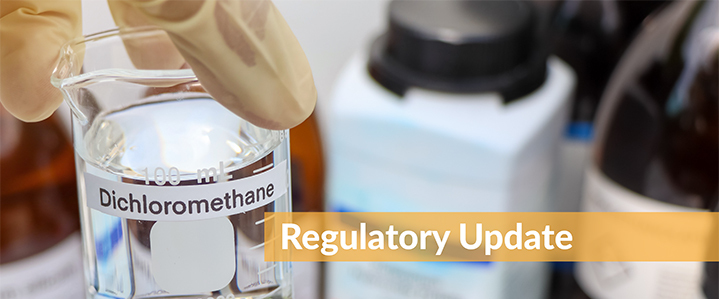Four Signs Your Campus EH&S Program Needs a Gap Assessment

Key Highlights
- Gap assessments reinforce a culture of safety, institutional resilience: Conducting regular gap assessments promotes continuous improvement, embeds safety into campus culture, and positions the institution to respond confidently to emerging risks and compliance challenges.
- Gap Assessments Are Collaborative, Not Punitive: A gap assessment is not about catching your institution or team in any wrongdoing. It works in partnership with your EH&S team to improve processes, optimize resource allocation, and enhance program resilience.
- Staffing Changes and Leadership Transitions Increase Risk: Workforce shifts, retirements, and leadership changes can cause loss of institutional knowledge – a gap assessment can help ensure compliance and program continuity.
- Research and Regulatory Changes Demand Agility: New laboratory procedures, new principal investigators, and evolving regulations create dynamic environments where EH&S programs must quickly adapt—gap assessments help ensure your program stays aligned and compliant.
An environmental health and safety (EH&S) program at a college or university is tasked with running like a well-oiled machine – the overall program’s optimal performance depends on the smooth and efficient operation of each program component. It’s much easier said than done.
Colleges and universities face a range of occupational health and safety risks and environmental compliance challenges. With the combined complexities of institutional operations and the shifting priorities that characterizes academic communities and campuses, it’s easy for EH&S programs to experience gaps that result in inefficiencies or regulatory noncompliance. Such gaps occur in numerous ways — making them even more challenging to identify.
Typically, EH&S compliance gaps occur because of controlled or uncontrolled events, such as demographic or staffing changes that lead to loss of experienced, qualified individuals in key roles, and the loss of institutional knowledge. Also, health and safety must keep pace with rapidly evolving technologies and procedures.
An EH&S gap assessment can help you identify vulnerabilities in your program and ensure that it is running in a streamlined manner. But let’s back up. What is an EH&S program gap assessment?
What an EH&S Gap Assessment Is — And What It’s Not
A gap assessment of your EH&S program is exactly what its name suggests: a structured evaluation that measures how each program component performs within the overall EH&S program. The gap assessment’s scope can range from a bird’s-eye overview of your entire EH&S program to a laser focus on a single program, which includes regulatory compliance, workplace health and safety, risk management, employee training, emergency preparedness, environmental impact and sustainability, and industrial hygiene.
Gap assessments evaluate the current program component’s performance to identify deficiencies, ensuring resources are efficiently allocated to address EH&S compliance, health and safety risks, and environmental risks. Beyond evaluating technical aspects of your EH&S program, a gap assessment also examines the effectiveness of your management structure. This includes analyzing reporting lines, communication protocols, and resource allocation to ensure your EH&S program is aligned and efficiently managed with the goals of your college or university.
A gap assessment is not a regulatory compliance audit. It is not about ticking off inspection items from a lengthy checklist. And it is certainly not about “catching” your institution in any wrongdoing nor “reporting” areas of non-compliance to regulatory agencies.
Rather, a gap assessment is a powerful, tool performed by an independent third party – it’s an informal process designed to work in partnership with, and on behalf of, your EH&S team to streamline program components and ensure the overall health and safety of your campus community. When done correctly, it is tailored to your institution’s needs and operations. Most importantly, findings are a gold mine of information that can unveil areas for improvement and are used to help focus resources towards addressing EH&S program vulnerabilities with the highest risk.
So how do you know when it’s the right time to invest in a gap assessment?
Four Signs Your Institution Needs an EH&S Gap Assessment
Activity and change are defining elements of academic campuses. Some colleges and universities choose to wait until their institution has gone through a big change or a regulatory audit to conduct their gap assessment. Other institutions periodically conduct a gap assessment to ensure their EH&S program remains up-to-date, compliant, and performs optimally. Below are four common changes where any institution would benefit from a gap assessment.
1. EH&S Workforce Changes, Demographic Shifts
The EH&S sector is experiencing a growing talent gap driven by several converging trends. A significant portion of the current workforce is approaching retirement, while fewer young professionals are entering the field—often due to limited awareness of EH&S as a viable career path. At the same time, the industry is grappling with increasingly complex regulatory and safety requirements, escalating the demand for highly skilled professionals who can keep pace with evolving standards. The following are several issues affecting EH&S:
Aging Workforce
With many seasoned EH&S professionals nearing retirement, there aren’t enough qualified individuals entering the field to fill the gap. Many openings are to replace workers who transfer to different occupations or exit the labor force through retirement. Finding qualified replacements can be difficult, especially with the increasing complexity of regulations and scientific advancements. EH&S roles often require a diverse skill set, encompassing knowledge of environmental regulations, occupational safety, and risk management.
Highly Repetitive Tasks Create Staff Dissatisfaction and Turnover
Let’s face it, staff burnout is real. Fostering a stimulating work environment while ensuring that routine tasks such as eye-wash inspections are completed is a delicate balance. It’s not uncommon to have frequent EH&S staff turnover on campuses – particularly in positions requiring repetitive technician level activities, such as conducting lab inspections and providing routine training.
Employee turnover and the resulting short or mid-term staffing gaps creates a domino effect. It contributes to gradual loss of subject or program-specific expertise and an increased likelihood of unforeseen compliance gaps in various pockets of EH&S services. A gap assessment can support and mentor newer EH&S employees who do not have the built-in experience that later-career EH&S professionals have.
Planned Transitions in Leadership
A gap assessment also can be conducted as part of an EH&S program’s planned staffing-transition plan. One of the biggest downsides of leadership transitions is the loss of organizational knowledge. Going through a bunch of file cabinets and sitting in meetings with an army of people is the last thing a new staff member wants to do to figure out where the EH&S program stands. The gap assessment is a valuable tool to gauge current program performance level and the maturity of the overall program as well as the adequacy of existing services to meet current and future needs.
2. New or Modified Laboratory Research Procedures and Techniques
Campuses often host multiple academic research studies involving various hazardous materials and processes across hundreds of labs, each individually administered by one or more principal investigators (PIs). Efficiently managing EH&S across these labs is no easy feat.
Furthermore, an EH&S program must ensure availability of sufficient safety staff to support the arrival of new PIs, new lab procedures, or new hazardous materials that require additional support and collaboration. A new PI or a change in research has knock-on effects that impact a wide range of items and areas, from not updating permits and receiving approvals from regulatory agencies in time to conduct the change in research, to a change in facility needs and insurance. New PIs often trigger additional EH&S reviews to ensure their research space provides the appropriate EH&S controls and meets EH&S regulations and standards.
In the face of such a rapidly evolving research landscape, conducting a gap assessment allows research leadership at the college or university to evaluate the maturity of its EH&S program, so services can be scaled up or down and aligned with campus research needs. The gap assessment also helps you understand once-and-for-all who is working with what hazard in the laboratory.
Biohazardous materials continue to be a booming area requiring EH&S program support. Any professor starting new research involving recombinant DNA will require campus focused guidance and collaboration with an Institutional Biological Safety (Biosafety) Committee (IBC) to coordinate protocols review, assess risk, implement controls, and receive approval — an IBC is a vital part of compliance and necessary when receiving funding from the National Institutes of Health.
With the hazards of biological research becoming increasingly complex, campuses nationwide are tightening up their biosafety programs to ensure regulations and best practices are always followed.
3. Changes to Organizational Structuring
Colleges and universities should conduct a gap assessment when considering an organizational restructuring of the EH&S program to prevent unintended knowledge and skill gaps. EH&S departments may fall within the larger umbrella of research compliance; however, some campuses may under certain circumstances elect to restructure some of their services or the overall program under Facilities Management or Finance. The resource evaluation that’s conducted as part of the gap assessment can offer valuable insights on the need for efficient staffing configurations based on key parameters such as number of interested parties, PIs, impacted square footage, and dollar value of the research.
4. Changes to Regulatory Requirements
Changes to federal, state, and local regulations reflect shifts in industry standards and best practices. Such changes can impact EH&S in various ways and even impact other departments such as facilities. Institutions may need to invest in staying up to date with evolving legal frameworks to avoid fines, penalties, or reputational damage. It may be necessary to modify operational procedures such as handling hazardous materials, waste disposal, or worker safety protocols. Revised regulations also require retraining of impacted employees to ensure compliance.
Now that we’ve laid out key timing opportunities to initiate a gap assessment, you may be wondering about the benefits of an EH&S gap assessment beyond catching potential EH&S compliance vulnerabilities.
Four Benefits of an EH&S Gap Assessment
1. Direct Resources to Where They are Most Needed
In addition to identifying gaps, your assessment also can drill down into process improvement needs, weaknesses, and the risks posed by deficiencies. This knowledge can guide your priorities and direct resources to the areas where they are most needed. You may, as part of the gap assessment process, identify areas in your program where you elect to conduct a detailed audit for improvement and streamlining.
2. Fine-tuning for Efficient Staffing Configuration
The resource evaluation and benchmarking that may be part of a gap assessment may uncover inefficiencies in your current EH&S program staffing or lack of an internal EH&S person. With the increased demand for biosafety services and use of laser-containing equipment (e.g., laser cutters, 3D printers, CNC routers) on campuses nationwide, EH&S programs are frequently faced with the challenge of hiring a high-level biosafety or laser safety focused team member with subject matter expertise for tasks that occur infrequently on campus. In this scenario, an EH&S gap assessment could highlight program and service specific needs that would allow the development of a cost-effective and efficient staffing configuration that meets the sweet spot between expertise and cost.
Some campuses choose to outsource or seek additional outside support for certain EH&S services to reduce staffing inefficiencies. Such services may include tasks that don’t occur regularly enough for an all-hands-on deck approach or those all too routine activities that lead to staff dissatisfaction and high turnover. The plus side to this would mean a boost to employee morale if your in-house staff can focus on other program priorities and be engaged in their position – then hopefully they stick around.
3. Outside Perspective to Validate Program Needs
Many EH&S directors are aware of the issues on their campus — they can identify exactly what gaps exist in their program. Having a report from an independent third-party compliance and safety expert brings a fresh outside perspective and added validation to concerns. Institutional leadership or other departments may also be more open to ideas validated by a qualified outsider. An independent expert can serve as a different voice to help resolve issues between departments on a campus.
Consider roof safety concerns as an example. It’s not uncommon for the EH&S director and the Director of Facilities to disagree with the proper procedures for roof safety and, specifically, in identification of the present hazards and the steps to address them. A third-party expert can help both sides reach a conclusion that allows projects to be well managed, while also ensuring worker safety and regulatory compliance.
4. Safeguard Your Institution’s Reputation
By proactively addressing potential weaknesses and reinforcing a culture of safety and compliance, gap assessments help protect an institution’s brand reputation. It demonstrates a commitment to safety and environmental responsibility and helps strengthen interested parties and public confidence.
Major safety incidents can severely damage a university’s reputation, making it less attractive to researchers and funding agencies (e.g., National Institutes of Health). While not a direct cause for funding loss, this reputational damage can indirectly affect the institution’s ability to compete for grants. When applying for a grant, often a certificate of safety or biosafety compliance is required to be submitted with the application.
A Proactive Approach Keeps Your EH&S Program Compliant, Efficient, Resilient
A well-run EH&S program is essential for campus safety, compliance, and efficiency.
Given the ever-evolving landscape of institutional operations, staff changes, research advancements, and regulatory requirements, gaps in these programs are inevitable. A proactive approach—such as conducting an EH&S gap assessment—ensures that these vulnerabilities are identified and addressed before they become significant risks.
A gap assessment strengthens workplace safety, enhances collaboration, and safeguards an institution’s reputation. By investing in this process, colleges and universities can ensure their EH&S programs remain resilient, efficient, and aligned with their evolving needs.
Want to know more about how an EH&S gap assessment can benefit your program? Get in touch with us today!
Subscribe
to our blog
"*" indicates required fields






